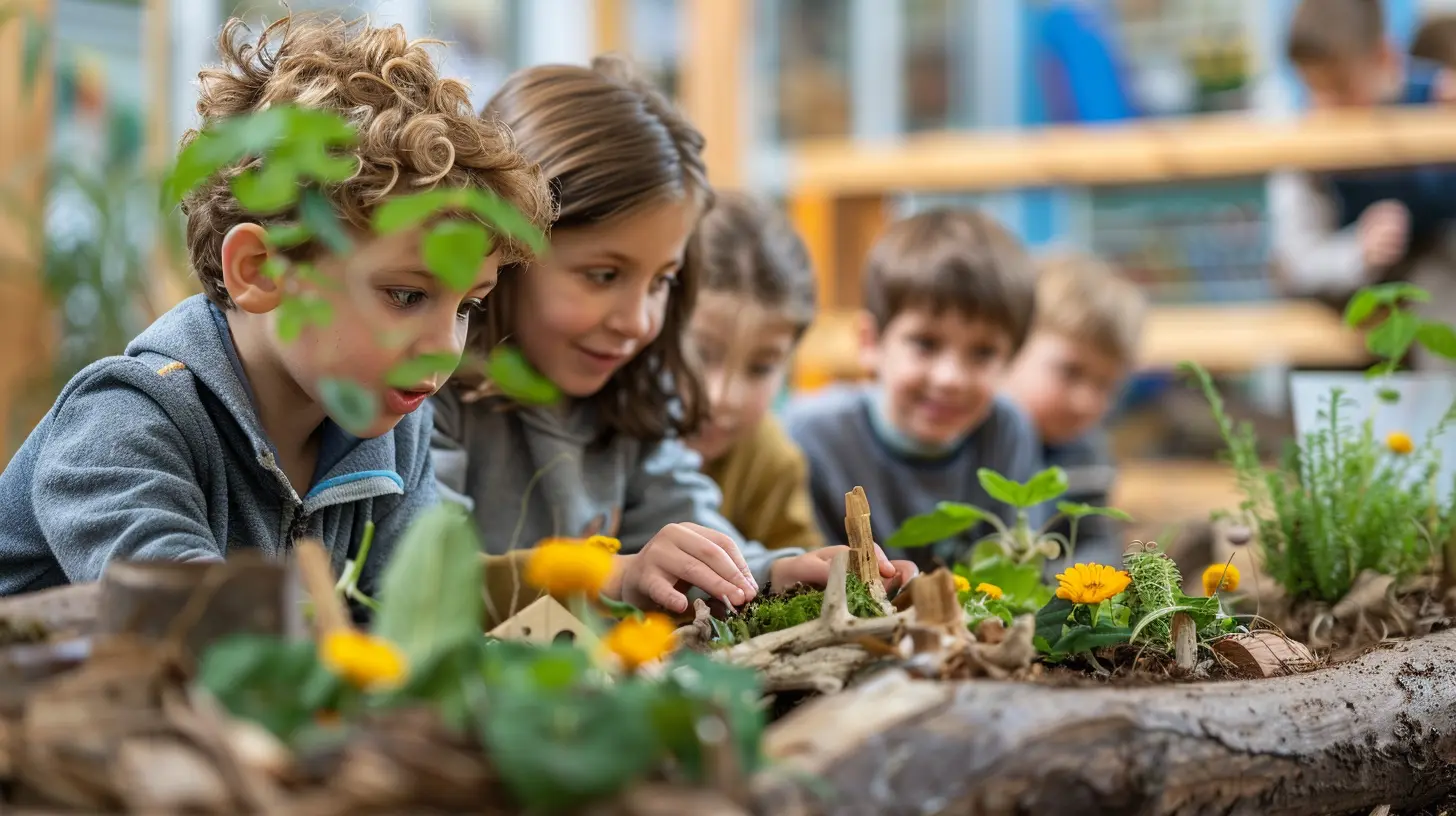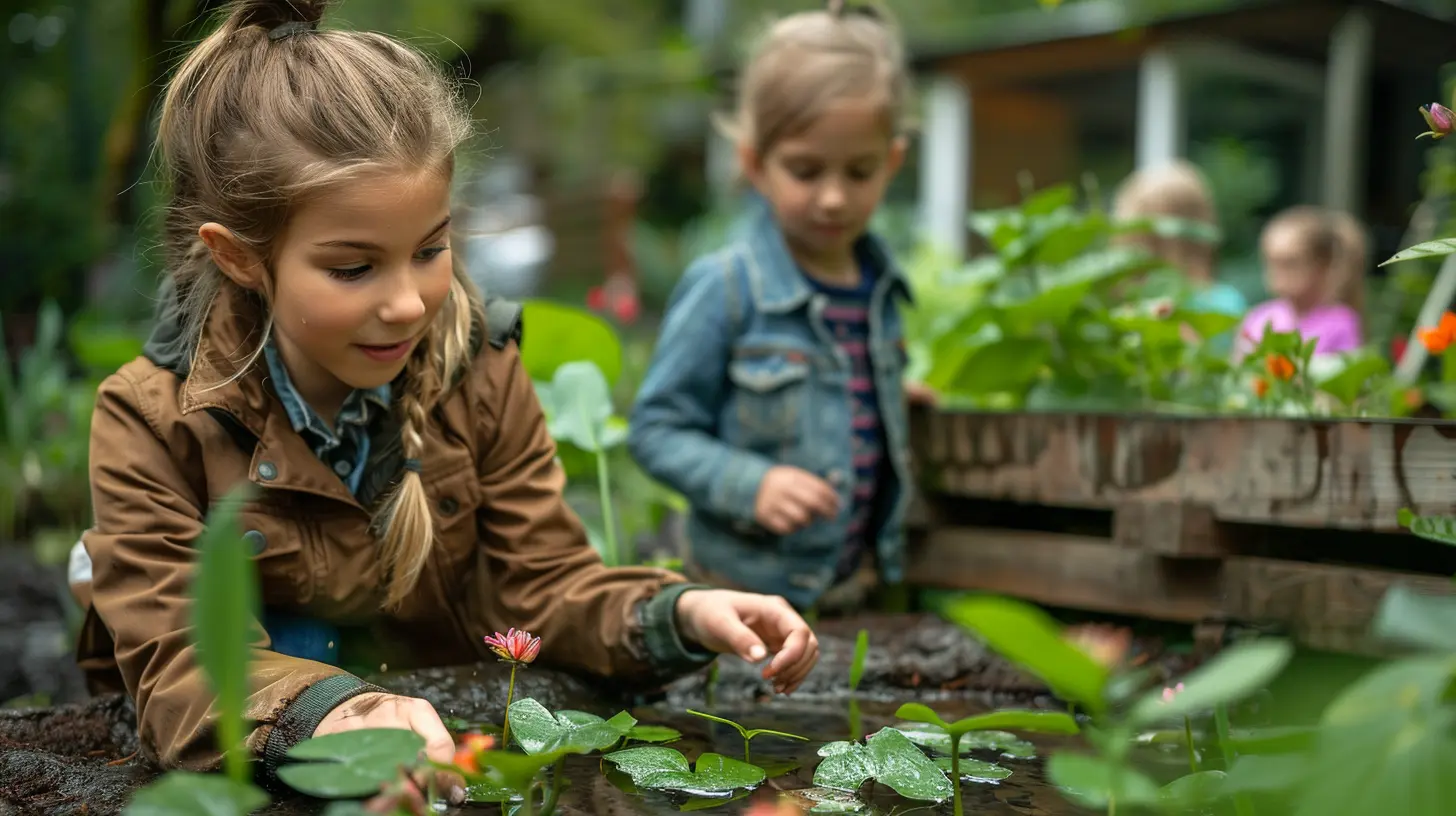12 November 2025
Let’s face it—kids love the outdoors. Whether it's chasing butterflies on the school field or collecting fallen leaves during recess, nature has a magical pull on young minds. So why not bring it right into the classroom? No, not literally dragging in mud and bugs (although, that could be fun too), but by weaving the environment into everyday learning.
Integrating nature and environment into primary school lesson plans isn’t just a trendy idea—it’s a game-changer. It helps kids understand the world around them and sparks a sense of wonder that textbooks alone can’t provide. So, how do we actually do that without turning the classroom into a jungle?
Grab your cup of coffee (or tea), and let's dig into the soil of this topic—pun totally intended.
Why Nature Belongs in the Classroom
Before we dive into the how, let’s talk about the why. Why should we even bother?1. It makes learning real
Kids don’t just learn better when they see the real-world application of a concept—they remember it. Imagine teaching plant life cycles by growing actual plants instead of just showing diagrams. Way more fun, right?2. It nurtures curiosity and responsibility
When children interact with nature, they start asking questions: “Why does this plant need sunlight?” or “Where do ants go in the winter?” Boom! You’ve got budding scientists. Plus, they start caring more about the environment, seeing themselves as a part of it rather than apart from it.3. It boosts mental health
Let’s not forget—fresh air and green spaces help reduce stress and improve focus. Studies have shown that kids who spend time in nature are often calmer and more attentive. That’s a big win in any teacher’s book.
Start with the Basics: What Can Be Integrated?
You don’t have to overhaul your entire curriculum. Small tweaks in your lesson plans can make a huge difference.Subjects That Mesh Beautifully with Nature:
- Science: This one’s obvious. Weather, ecosystems, plants, animals—it’s practically begging for outdoor exploration.- Math: Patterns in leaves, counting bugs, measuring rainfall—math comes alive when it's outside.
- Language Arts: Writing nature journals or poetry inspired by a walk in the woods? Yes, please.
- Art: Nature collages, leaf rubbings, drawing landscapes—it's hands-on and creative.
- Geography: Exploring local landforms, bodies of water, and how communities interact with their environment.

Practical Ideas for the Classroom (and Beyond)
Alright, let’s talk action. Here are some real, ready-to-go ideas that you can use to integrate nature into your primary school lessons—without needing a degree in botany.1. Create a Class Garden
Whether it's a few pots on a windowsill or a corner of the schoolyard, gardening is a perfect hands-on learning tool. You can tie it into:- Science: Plant growth, photosynthesis.
- Math: Measuring plant height, tracking watering schedules.
- Responsibility: Rotating “plant care” duties builds habits.
Plus, kids LOVE to dig in the dirt. It’s like magic for engagement.
2. Nature Walks and Journals
This one’s super simple and requires zero fancy equipment. Take your class outside—yes, even to the schoolyard—and ask them to notice things. What do they hear? What colors do they see?Back in the classroom, have them write short journal entries or draw what they saw. This connects beautifully with observation skills, descriptive writing, and even mindfulness.
3. “Adopt a Tree” Project
Pick a tree on the school grounds and let the class “adopt” it. Each week, observe it and record changes. Is it blooming? Are there animals nearby? How does it change with seasons?Tie it into:
- Science: Life cycles.
- Art: Drawing seasonal changes.
- POV writing: “A Day in the Life of Our Tree.”
It’s free, easy, and packed with learning opportunities.
4. Eco-Themed Story Time
Storybooks are a great way to introduce environmental concepts. Try books that touch on sustainability, animal habitats, or weather.After reading:
- Discuss the themes.
- Act out scenes.
- Write your own eco-tales.
This builds vocabulary and comprehension while planting seeds of environmental awareness.
5. Weather Watchers
Designate a student or group each day as the "weather team." They go outside, observe, and report back:- Temperature
- Clouds
- Wind
- Any changes from yesterday?
Use the data over time to create graphs, make predictions, or even write fun weather reports (hello, budding meteorologists!).
Digital Meets Nature: Using Tech to Explore the Environment
Wait, nature with screens? Isn’t that a contradiction? Not really. Tech can be the bridge that connects students to parts of nature they can’t see up close.Augmented Reality (AR) Apps & Virtual Nature Walks
Use AR apps that bring animals or plants into the classroom virtually. Google Expeditions or 3D animal models can help kids “meet” creatures from the rainforest without leaving their desks.Live Cams from Zoos and Natural Parks
Set up live streams of eagle nests, underwater reefs, or forests. Watch them together during class and encourage students to spot interesting behaviors.Building Environmental Awareness (Without the Guilt Trip)
Teaching kids about the environment shouldn't be about overwhelming them with doom and gloom. Instead, focus on positive actions they can take and the beauty of the natural world.Start Small
- Turn off lights when the room is empty.- Recycle classroom materials.
- Bring reusable water bottles.
These little things reinforce that their actions matter.
Classroom Discussions
Ask questions like:- “Why do we need bees?”
- “What happens to trash after we throw it away?”
- “How can we help animals stay safe?”
Let students share ideas and collaborate on solutions. You’re building critical thinkers and responsible citizens.
Seasonal Activities (Because Nature Changes, and That’s Cool!)
Each season offers something unique you can bring into the classroom:- Spring: Seed planting, birdwatching, studying pollination.
- Summer: Sun and shadows, water conservation, outdoor art.
- Fall: Leaf collection, studying migration patterns.
- Winter: Animal hibernation, snow and ice experiments (if weather permits).
Seasons give you a built-in structure for organizing nature-based lessons throughout the year.
Collaborate and Connect
You’re not in this alone. Partner with:- Local environmental educators: Invite them to speak or lead activities.
- Parks and nature centers: Plan field trips or virtual tours.
- Parents: Encourage weekend nature time with take-home activities.
Nature is a community resource. Tapping into it makes your job easier—and the experiences richer.
Common Challenges (And How to Tackle Them)
Of course, no strategy is perfect. Here are a few hurdles teachers might face—and how to hop over them.Limited Outdoor Space?
No field? No problem. Pots on a windowsill or observing clouds from the asphalt still counts. It’s about noticing, not location.Lack of Time?
Integrating doesn’t mean adding more. It means shifting how you teach. Instead of a reading about the water cycle, build a mini water cycle in a jar. It takes the same time, but it sticks better.Weather Issues?
Bad weather? Go virtual with nature cams or documentaries. Or do mini indoor nature science labs. Nature isn’t always sunshine—and that’s part of the lesson too.Wrapping it All Up
So, there you have it. Nature isn't something to squeeze into a lesson plan—it’s already a part of everything around us. By integrating the environment into primary education, we’re not just ticking curriculum boxes—we're raising curious, compassionate, and conscious kids.And let’s be honest—teaching a math lesson while counting bugs or writing poetry inspired by the rustling trees? Way more fun than worksheets.
So, next time you’re planning a lesson, just ask yourself: “How can I bring a bit of the outdoors in?”
The results might just surprise you—and your students.


